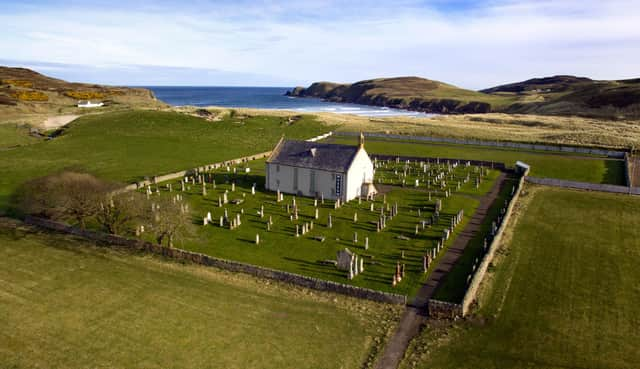Highland Clearances museum launches campaign to protect collection


Strathnaver Museum near Bettyhill sits at the heart of the community cleared by the Sutherland Estates between 1814 and 1819 with the building playing a central role in the evictions.
Once the parish church, it was here that tenants gathered to hear eviction notices and later where they gave evidence to the Napier Commission on their living conditions, with the inquiry ultimately leading to better protection and security of tenure for crofters and cottars.
Advertisement
Hide AdAdvertisement
Hide AdNow, the museum, which sits on the North Coast 500 and has experienced a surge in visitors as a result, has launched a fundraising campaign for essential works to the building in a bid to stop its collection moving into storage.
Fiona Mackenzie, development manager at Strathnaver Museum, said: “We are very lucky that our building is our largest object in our collection. It has such a long association with the area.
"Trustees are concerned that the deteriorating condition of the building could threaten the whole collection and see it having to be removed and put into storage.”
Ms Mackenzie said the pulpit where people gave evidence to the Napier Commission was still in place.
It was from here that Reverend David Mackenzie, who initially supported the Clearances as a way of bettering the prospects of tenants, preached.
Ms Mackenzie said: “The pulpit is really quite evocative. Reverend Mackenzie had supported the removals in 1814 and indeed he translated the original notices and recommended their acceptance to his congregation.
“His tune changed though on seeing the condition of the people removed to the coast.”
Ms Mackenzie said people came from across the world to search for the homes and settlements of their ancestors, with little remaining in the landscape to tell of their family’s story.
Advertisement
Hide AdAdvertisement
Hide AdHowever, the museum takes them to a place that was central to their lives, she added.
Ms Mackenzie said: “It’s a very emotional experience for some people. They are disappointed that the villages where their villages came from are no longer there. There are no markers.
"It’s important for them to be able to come back to a point where they can learn about what happened.”
Ms Mackenzie said it was hoped to create a Clearances Trail to guide people across Strathnaver and the villages that were emptied out with the evictions that made way for large-scale sheep farming.
Work is also being done to collect stories from the diaspora who have links to the Strathnaver Clearances.
Ms Mackenzie added: “People often look at the landscape here as a wilderness but that landscape was shaped by people over thousands of years. What we see today is a consequence of the clearances.”
Maintenance is needed at the museum building to correct the deterioration of the plaster and cement render to protect it from damp.
The work will complement a renovation of the old church that will allow for more visitors, a better space for archives and more room to tell the story of this corner of the north west, with public funding secured for this aspect of the work.
To support the fundraiser, visit www.crowdfunder.co.uk.